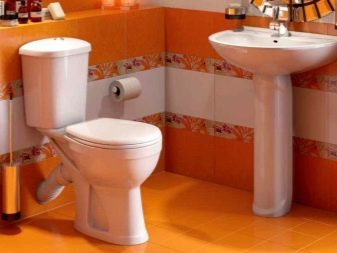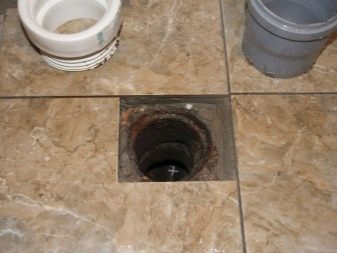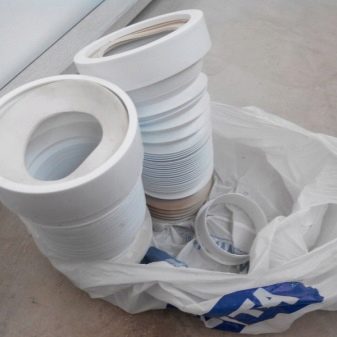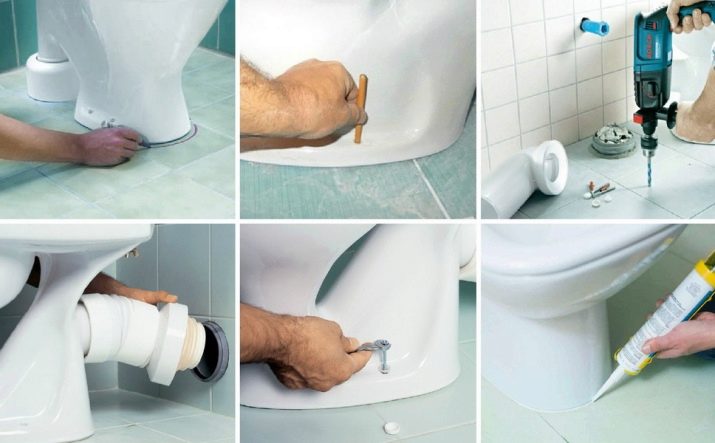Toilet corrugation: features and tips for choosing

Corrugation is called pipe with a series of parallel protrusions... Its main advantages include flexibility, durability and ease of installation. Pipes of this kind can be used in almost all types of construction work. The degree of flexibility of the corrugation is measured by the height and the number of ridges - the more there are, the more the pipe bends. Today, among workers of repair organizations, the toilet corrugation, created to facilitate the installation of plumbing equipment, is especially popular.

What it is?
The corrugation for the toilet is considered an invariable component of a professional plumber's set. It looks like a wide and flexible enough sleeve. The main purpose of the part is to ensure uninterrupted drainage from the toilet. This durable and extremely lightweight part replaced the inefficient sewer structures that were used at the beginning of the 20th century.

It is worth noting that before the appearance of the corrugation, replacing the toilet on your own was comparable to a real feat. It was not possible to carry out a replacement without completely destroying the fasteners and tiles. The new drain hole had to correspond exactly to all measurements made, and its coincidence with the cast iron alloy sewer was considered mandatory. A professional plumber was indispensable. However, nowadays, the presence of plastic corrugations allows even home craftsmen to repair plumbing.


Expansion with an internal seal at one of the ends of the pipe allows the corrugation to be put on the toilet bowl mountings.Also, a rubber sleeve is placed there, which facilitates the process of attaching to the riser and seals the resulting structure. The pipes easily fit into any structure, which makes the plumbing installation process quite simple.


Advantages of a corrugated toilet pipe:
- low cost;
- ease of installation;
- the ability to use in difficult situations where the installation of a branch system or pipe is impossible;
- additional devices and actions will not be required (for example, welding pipes from cast iron);
- the inner side of the corrugation is smooth, so waste can easily pass through the pipe;
- easy dismantling;
- corrugation is perfect for both temporary and permanent bathrooms;
- materials that are safe for human health are used in it.




Disadvantages of a corrugated pipe.
- Not too high degree of strength. Even a small piece of glass or wire can damage the pipe.
- Sensitive to hot water, which can deform the plastic surface.
- Severely curved corrugations can worsen blockages.
- Long pipe sags causing blockages. It is possible to install a support system, but this does not make much difference.
- The appearance of the corrugation is not particularly aesthetically pleasing.
- Sewer cleaners will deplete the walls. The result is constant leaks.
- A black coating is visible through the material.
- There is no possibility of mounting the transition system from the inside of the walls.




What is it for?
The corrugation is indispensable in cases where the toilet cannot be fixed directly above the drain hole. The corrugated pipe can also be used to deform the floor. Situations like this happen when the floor tiles are laid without dismantling the old ones, right on top of the previous finish. Another reason for using the toilet corrugation is the rearrangement associated with the appearance of new elements in the room. This can be a washing machine, shower, dryer and other items.


Residents of old apartments may face the following problem - the hole in the new toilet does not fit into the existing sewer system. This difficulty often arises for apartment owners in houses built in Soviet times. In those years, toilet bowls with an oblique hole were installed in toilets. Most of the modern plumbing equipment has direct releases.
Corrugated pipes are indispensable for creating temporary toilet cubicles for social events. These parts are characterized by ease of installation and low cost. Their main disadvantages include deformation at too high temperatures, low strength and the likelihood of blockages at strong bends.


Varieties
Corrugated joint systems differ from each other in the raw materials from which they are made, as well as in the method of fastening. For example, for the owner of a small room, the best option would be a pipe with such a bend, which will allow two parts to be connected to one passage of the structure at once. When installing this kind of corrugation, a special rubber sleeve may also come in handy.


The cost of even the most expensive element of a plumbing structure is relatively low, so you should not skimp. It is better to overpay a little for it, but achieve high quality, than to suffer later, correcting numerous defects.
The corrugation of modern European manufacturers is mostly assembled from a reinforced base. It is reinforced with a special flexible metal wire. This model is rigid, its structure does not sag and resists aggressive external influences.

Pipes from polypropylene raw materials very soft. Their rubber base is extremely flexible. They are popular for installing temporary toilets at fairs or other social events.

Corner corrugation with bend used in cases where the sewer system is located too close to the mounting area with the toilet. Its main function is to provide a strong bending joint. During installation, you may need a toilet eccentric to ensure a good seal. The element consists of two cylindrical containers, one of which is located as close as possible to the device outlet, and the other to the sewer pipe.


It should be borne in mind that currently the only possible alternative corrugation is elbow pipe made of plastic. When installed, a rubber cuff and a sealed serum are used to seal the joints. Here, pipe parts and branch systems also require special sockets.


Rigid pipe is stronger and more aesthetically pleasing. However, its main disadvantages are its cumbersomeness and the fact that when replacing just one pipe, it is necessary to dismantle the entire system. Vertical rigid models are installed quite rarely, and if this happens, then only in private houses. The reason for this is the need for a complete opening of the floor when dismantling or other repair work of the sewer system.


Dimensions (edit)
The length of the toilet flange is the most important indicator that should be taken into account when choosing this part. The two main categories of flute sizes are short and long. The standard sizes on the market today range from 230 to 500 millimeters. The first value is the shortest, it makes no sense to choose less.
The cuff diameter is usually 135 mm. The dimensions of the diameter of the end, which is joined to the sewer socket, varies from 100 mm to 110 mm. The parameters of the attachment attachment are also variable - their length can be from 50 mm to 70 mm.


Popular models
Imported manufacturers do not save on the amount of reinforced wire during the assembly of equipment, which significantly improves product quality and increases its service life. So, the popular Czech AlcaPlast company produces not only reinforced corrugation, but also made in non-standard design. It is notable for the method of fastening the corrugated pipe with a socket. Its diameter is 110 millimeters.


During installation, additional parts can be omitted.
Corrugations are highly valued, which can be easily adjusted to any riser regardless of its material of manufacture, be it plastic or cast iron. The thickness of the walls is of great importance - the larger it is, the longer the service life of the product will be. Reinforced models from AlcaPlast with thick walls are the most in demand.

How to choose?
To the owners who decided to do their own repair of plumbing equipment, choosing a corrugation for the toilet, you should pay attention to its such features.
- The degree of hardness, which directly depends on the materials used in the manufacture of the corrugation. Plastic products are softer, thinner and more elastic. They are suitable for all types of toilets. Reinforced pipes are more rigid, although the thickness of their walls does not differ from the thickness of plastic ones. They have good wear resistance.
- Reliability, which is also influenced by the material of construction. Corrugations equipped with reinforced wire are more rigid, which means they are stronger and more durable, even when mounted with an offset.
- Length it is worth choosing based on the distance between the toilet and the drain pipe. Do not forget that the corrugated joint system must not be stretched too much, as this will negatively affect the time of its use and the appearance in general. Stretched corrugations can sag and leak more often.


Additional components that are not always required during installation.
- Coupling, which connects the sewer to the toilet. It is worth purchasing if the elements of the system are located at a very close distance.It can be straight or eccentric.
- Lip connections or branch systems with non-return valve. The parts are designed for an offset toilet. They are usually made of plastic.

When installing, the optimal length of the part is especially important - it should not be too long, but not too short. The material used in the manufacture of both the corrugation itself and the peripheral elements of the structure must also be flexible, but at the same time durable.
Installation recommendations
When the sewer system is replaced, and not the installation of a completely new design, dismantling work is mandatory. It is required to completely shut off the water supply, as well as drain all the water from the tank.
In the hope of long-term operation, the toilet is often fixed with cement, which makes dismantling difficult. To facilitate the process of dismantling the object, you need to lightly hit with a hammer on the throat element of the toilet bowl. The vibration generated by the impact will act on the cement.


However, it should be borne in mind that in no case should you hit the sewer pipe, otherwise it will crack.
Before installing, a small amount of a sanitary sealant mixture, based on acrylic and some silicone components, should be applied to the edge of the corrugation. Such a composition will provide a high tightness of the joint, because it is specially developed for conditions of high humidity. Next, on the greased surface of the outlet edge of the system, it is necessary to put on the pipe, turning it towards the toilet with the side on which the inner membranes are located. The corrugated system should block the toilet outlet by about 5-6 centimeters.

After completing the installation, you should check the quality of work. For this, water is supplied to the tank and flushing is performed. If no liquid leaks out at the joints, then the joints are sealed. Otherwise, there are leaks. To eliminate them, it is required to treat problem areas with several layers of a sealed mixture.


Extend the pipe before directly connecting to the sewer system. To avoid blockages, control not only pipe sags, but also all slopes. Mark the points on the floor for attaching the toilet, after having disconnected the pipes. Drill the holes obtained and coat with a sealed mixture. Attach the toilet by tightening the mounting bolts until the plumbing stops wobbling and stands straight.

Be careful: if you overdo it, the base may split.
Reconnect the adapters by sealing the joints. After that, check the tightness of the joint again. Pour the screed and carry out the final finishing work on the floor.

A particularly important step is the installation of the cuff. The level of sagging depends on the degree of elongation of the corrugation and technical characteristics. A tensioned joint is highly susceptible to deformation. For this reason repairers strongly recommend avoiding unnecessary stress on the structure during the operation of the system.

You should be prepared for the formation of so-called "pockets" in the sagging corrugation, in which harmful deposits accumulate. This leads to rupture of its walls. It is necessary to prevent the consequences of this kind with additional clamps. In difficult cases, you can purchase bent sockets with a bend angle of 45 degrees (according to GOST).

It is also worth noting that vertical sewer structures are usually somewhat more aesthetically pleasing and often fit much better into the design of the toilet room. Toilets of this kind are easier to operate and take less time to clean.
For information on how to connect the toilet to the sewer, see the next video.








